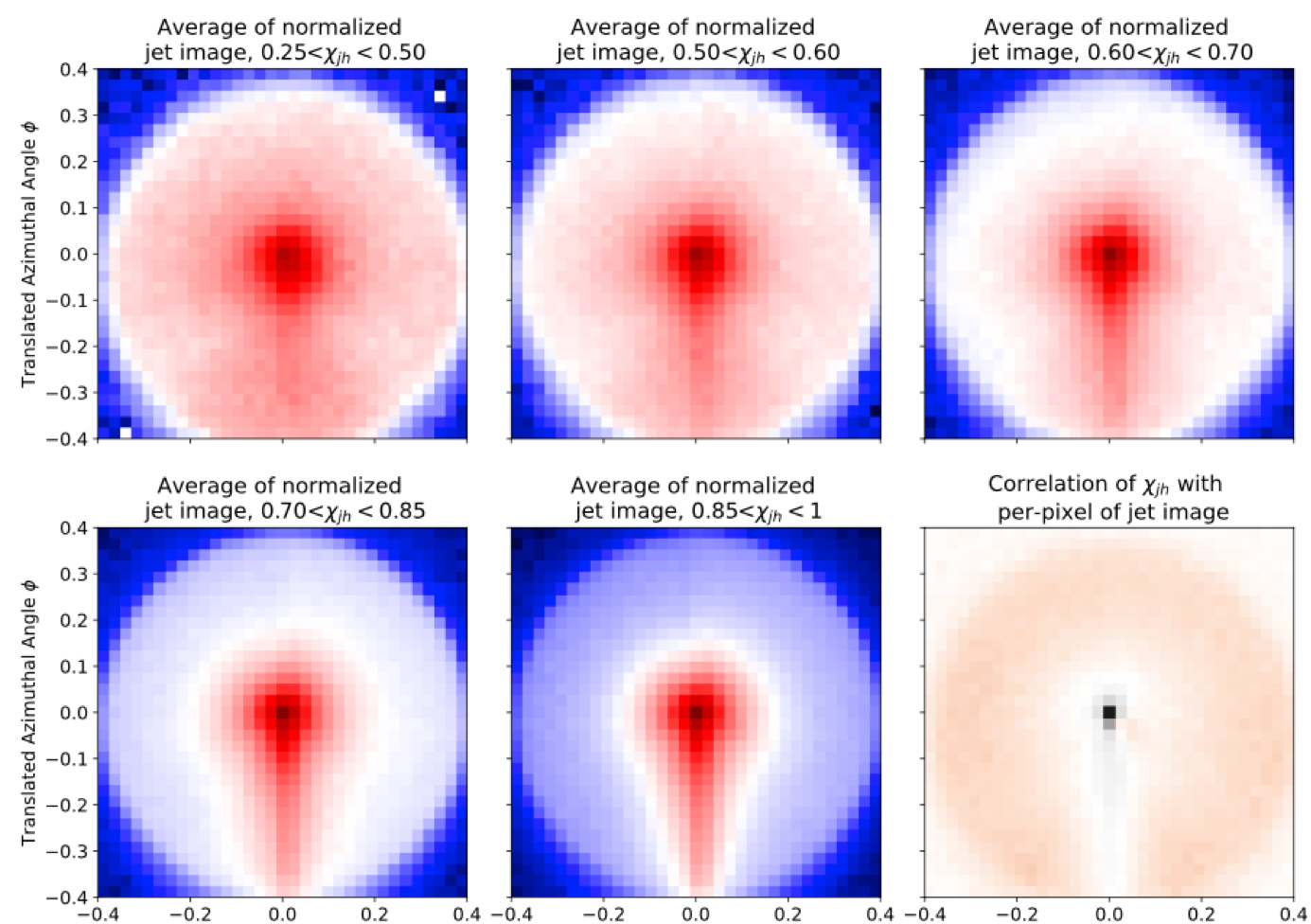The applications of machine learning techniques in high-energy nuclear physics are very promising. Recent interesting examples include:
- identifying the equation of state type that the QCD hot medium undergoes in the rapid expansion of a heavy-ion collisions,
- identifying the degree of modification of high energy jets traversing deconfined QCD matter on a jet-by-jet basis.
I will briefly discuss the latter topic here.
Jet interactions in a hot QCD medium are conventionally assessed by measuring the modification of the distributions of jet observables with respect to the proton-proton baseline. However, the steeply falling production spectrum introduces a strong bias toward small energy losses that obfuscates a direct interpretation of the impact of medium effects in the measured jet ensemble.
We employ the convolutional neural network to identify the degree of energy loss suffered by the jets traversing hot QCD medium on a jet-by-jet basis from the jet images.
By analyzing these images, we are able to extract the original jet transverse momentum. This corresponds to the transverse momentum of an identical jet that did not pass through a medium. Despite many sources of fluctuations, we achieve good performance! It is mainly the angular distribution of soft particles in the jet cone that contains significant discriminating power. Armed with this knowledge, we study a set of jet observables to estimate their sensitivity to bias effects and reveal their medium modifications when compared to a more equivalent jet population, i.e., a set of jets with similar initial energy.
You can find our paper here: https://arxiv.org/abs/2012.07797.
